Market trends
Catch the wave before it breaks and lead the way forward.

Tech Lab
Review innovative algorithms, privacy solutions, proposals, and other developments shaping the future of blockchain technology!
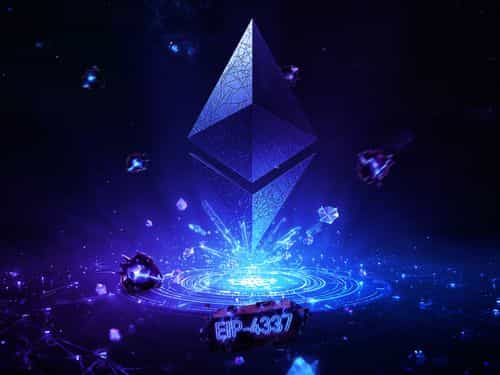
EIP-4337: Dev Guide to ETH's Account Abstraction
For years, the Ethereum ecosystem has grappled with a fundamental design choice: the separation between Externally Owned Accounts (EOAs) and Smart Contract Accounts. While powerful, this duality has created significant user experience hurdles, from the terror of losing a seed phrase to the rigidity of transaction validation. EIP-4337 is not just another incremental update; it's a paradigm shift that introduces Account Abstraction (AA) to Ethereum's application layer, promising to reshape how we interact with the blockchain. This article provides a technical breakdown of EIP-4337, exploring its architecture, core components, and the powerful new capabilities it unlocks for developers and advanced users.

Ethereum “Fusaka” Upgrade
The Ethereum "Fusaka" upgrade, set for mainnet launch in early December 2025 after successful testnet deployments, is a significant advancement incorporating 13 Ethereum Improvement Proposals (EIPs). These EIPs focus on crucial areas like scaling, performance, and enhancing both user and developer experience, laying the groundwork for future Ethereum developments.

Potential Role of Zero-Knowledge
Imagine a future where your cross-chain transactions are verified without revealing a single detail! In a world where privacy is often compromised by cross-chain bridges, Zero-Knowledge Proofs (ZKPs) emerge as a revolutionary solution, offering a way to validate transactions without exposing sensitive data. As blockchain interoperability grows, ZKPs are set to redefine privacy, offering a secure and private bridge between networks, all while keeping your data hidden from prying eyes.

EIP-2537; improve cryptographic security
Ethereum is stepping up its cryptographic game with EIP-2537, adding support for the BLS12-381 curve. This upgrade boosts security to 128 bits, powering faster and more efficient operations for BLS signatures, zkSNARKs, and scalable consensus mechanisms. With precompiled operations, Ethereum can now handle complex cryptographic tasks seamlessly, paving the way for a more secure and scalable future. Read on to explore how this upgrade transforms Ethereum’s cryptographic capabilities and supports next-gen blockchain applications.

Bitcoin OP_RETURN Limit Removal
Bitcoin just broke one of its oldest taboos! With the upcoming Bitcoin Core 30 release, the long-standing 80-byte OP_RETURN cap is gone, replaced by a massive 4MB ceiling per output. This isn’t just a technical tweak; it’s a philosophical shift in what Bitcoin is allowed to carry. To see how this decision reshapes Bitcoin’s role, you’ll need to read the full article below.

EIP-7623: Higher Calldata Cost
Ethereum is once again reshaping its core economics, this time by re-pricing how data flows through the network. With EIP-7623, cheap calldata is no longer a loophole for oversized blocks but a pressure valve for stability. By making raw data more expensive while leaving everyday transactions untouched, Ethereum tilts the balance toward scalable rollups and efficient blobs. This isn’t just a fee tweak, it’s a strategic move to harden the network against spam, prepare for higher gas limits, and future-proof Ethereum’s modular roadmap. In short: higher costs for bulk data, lower friction for real users. Read the full article below and stay ahead of Ethereum’s next big shift.

Ethereum Pectra Upgrade
Get ready for Ethereum's most ambitious upgrade yet, Pectra, launched on May 7, 2025, is set to revolutionize the network! With 11 game-changing Ethereum Improvement Proposals (EIPs), Pectra enhances scalability, security, and user experience. It accelerates validator operations, increases staking limits, and optimizes layer-2 rollups to reduce transaction costs. Account abstraction brings programmable wallets, transforming how users interact with Ethereum. This upgrade positions Ethereum for the next phase of decentralized innovation. Now, read the full breakdown below.

EIP-7702 proposal review
Ethereum is on the verge of a breakthrough with EIP-7702, a proposal that lets simple wallets (EOAs) temporarily act like smart contracts, unlocking powerful features like sponsored transactions without ETH, batch actions that cut gas costs, and stronger security through session keys and multi-sig approvals. This upgrade not only simplifies user interactions but also makes Ethereum more efficient and secure. Ready to see how it all works? Read the full article to explore EIP-7702’s game-changing impact.

ERC-7683 cross-chain intent technical explanation
Imagine swapping assets across blockchains as easily as sending one transaction, no fragmented liquidity, repeated approvals, or hidden trust risks. That’s the promise of ERC-7683: a standard for cross-chain intents enabling gasless orders, atomic multi-leg transfers, and modular security. This article breaks down its technical design, structs, settlement interfaces, and safeguards, showing how it lays the groundwork for seamless interoperability.

ERC-7683 Standard's Review
Cross-chain interactions are one of the biggest bottlenecks in blockchain today, fragmented liquidity, complex token wrapping, high costs, and inconsistent trust models all slow down adoption. ERC-7683 proposes a standardized way to solve these issues by defining intents, unified order structures, and settlement mechanisms that make transfers across Ethereum, rollups, and Layer-2s seamless and secure. Understanding this standard is key for developers, dApps, and users who want to build or benefit from a scalable, interoperable Web3 ecosystem. Read the article to see how ERC-7683 is shaping the future of cross-chain interoperability.
Tech on the Horizon
Explore the groundbreaking technologies shaping the future, as they pave the way for the next generation of innovation and transformation in the digital world.
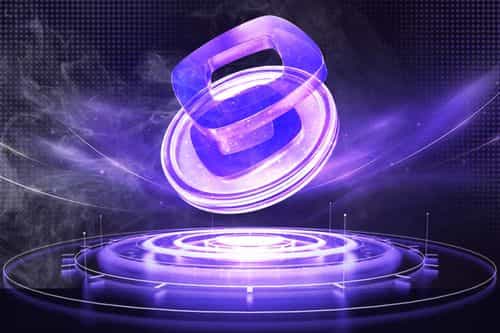
Monad: The fast parallel EVM
Monad is an EVM-equivalent Layer 1 that tries to make Ethereum-style applications run at the pace of modern parallel compute systems. Its core bet is that you should not have to abandon Solidity, Ethereum tooling, or the existing DeFi mental model to get sub-second finality and multi-thousand TPS. This review evaluates Monad through a Rango lens: how the chain works, whether the ecosystem is real enough to matter, and what its performance profile implies for cross-chain routing and liquidity aggregation.
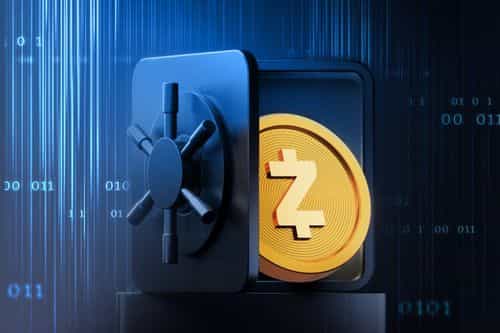
Privacy Coins Surge: Zcash & Confidential TRXs
A sharp re-pricing of privacy coins was observed in late 2025, with sector-wide gains of roughly 80% and multi-year highs recorded for several names. Zcash (ZEC) in particular has moved from a niche asset to the lead privacy coin by market capitalization, after a price spike of more than 1,500% since October and highs above $700 per coin. In this environment, questions such as how privacy coins work, how Zcash confidential transactions are implemented, and how Zcash vs Monero compares are being raised with renewed urgency. The discussion below is a coherent picture of the technology, trade-offs, and future of privacy coins; read the full article for more details.
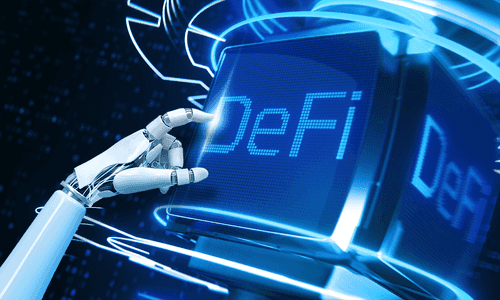
AI Agents in Crypto:Trading Bots to DeFi Protocols
A shift toward automated decisioning has been observed across crypto markets, where software agents are tasked with monitoring prices, routing orders, and managing on-chain positions without continuous human oversight. This topic matters now because venue fragmentation has increased, latency advantages have narrowed, and composable protocols expose programmable control surfaces that invite automation. It may be tempting to assume that greater autonomy directly yields better outcomes, yet a different behavior has been encountered in practice: the most durable gains are produced when agents are constrained by explicit safeguards and tested against realistic failure modes. As tooling matures, discussion is moving from whether agents should be used to how they should be supervised, updated, and recovered when conditions deviate!
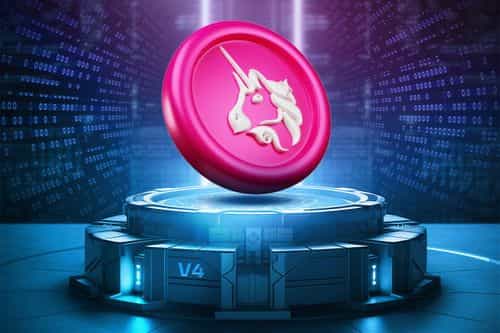
Uniswap V4: A Programmable AMM
Uniswap v4 reframes a DEX as a programmable liquidity kernel. Where v2/v3 fixed most behaviors in-contract, v4 exposes the swap/LP lifecycle to developer-supplied hooks. Paired with a singleton PoolManager and flash accounting, v4 compresses multi-pool strategies, custom fee policies, vault integrations, and execution safeguards into single transactions, without forking Uniswap. v4 is live across major EVM L1/L2s and positioned as the lowest-cost, most customizable Uniswap to date.

Uniswap V3: Economic Powerhouse of Modern AMMs
Automated Market Makers (AMMs) have matured rapidly in DeFi. Where Uniswap V2 offered simplicity, predictability, and broad liquidity, it eventually revealed its limits: capital inefficiency, passive liquidity sitting idle, and suboptimal fee / risk trade-offs for many LPs (liquidity providers). Uniswap V3 is the response: a redesign that allows LPs to concentrate liquidity in chosen price intervals, customise fees, assume more active roles, and extract more value. In this article, we step deep into Uniswap V3, its mathematical foundations, contract architecture, risk-return trade-offs, and how it compares with V2. Then, we survey major projects that have adopted or extended the V3 model, how they’ve optimized it, and what lessons are emerging. If you already understand CFMMs and Uniswap V2 thoroughly, you’ll find here both fresh formalism and strategic insight.

Soneium: The Entertainment-Grade L2
Soneium launched its mainnet in January 2025 as Sony’s flagship public blockchain. Its design ambition is clear: not only to serve crypto-native developers but to bring millions of Sony users into Web3, gamers, artists, and fans. The joint venture between Sony and Startale underpins Soneium with both corporate distribution muscle and Web3-native engineering talent.

Unichain Technical Review
Ethereum’s Layer 2 ecosystem has rapidly expanded, producing networks that reduce costs, increase speed, and broaden accessibility while inheriting Ethereum’s robust security model. Among these L2s, Unichain, developed by Uniswap Labs, stands out as a purpose-built chain designed to optimize decentralized finance. Unlike many generalized L2s that target broad ecosystems, Unichain’s core mission is to become the home for liquidity and financial applications, focusing on speed, fairness, and interoperability. In this review, we present a comprehensive exploration of Unichain’s technical design, use cases, operations, integrations, ecosystem performance, and outlook, and we highlight how it differentiates itself in the increasingly competitive rollup landscape.

Sui: Move with Extra Features
Sui Blockchain is changing the way we think about scalability and performance in the world of decentralized applications. Developed by Mysten Labs, this high-performance Layer 1 network introduces innovative concepts. In this article, we’ll explore a technical deep dive into its architecture, programming language and ecosystem performance and how these technologies enable sub-second finality, thousands of transactions per second, and a developer-friendly ecosystem. Keep reading to understand how Sui is paving the way for the next generation of blockchain applications.
Crypto Wallet Tracker for Market Trends
Timing is everything in crypto, and the right insights can make or break your next move. Cryptocurrency’s volatile nature makes it essential for investors to be able to track their assets in real time and make informed decisions quickly. A crypto wallet tracker is a tool that can help you monitor your portfolio and stay ahead of market shifts. With a tracker, you can make more informed investment decisions, manage multiple assets, and refine your strategy. This article will explore the benefits of using a cryptocurrency wallet tracker, the key features to look for when choosing one, and how to utilise it effectively to stay ahead of market trends.

Predict Market Trends with On-Chain Analysis
Crypto markets move fast! and if you're trading or investing, keeping up isn’t just helpful, it’s essential. Traditional analysis methods often fall short of capturing the nuances of decentralized networks. Enter on-chain analysis, a method that scrutinizes blockchain data to provide real-time insights into market dynamics. By examining transaction volumes, wallet activities, and miner behaviours, on-chain analysis offers a transparent view of the crypto ecosystem, enabling more informed trading decisions.

Sonic: Risen from the Ashes of Fantom
Sonic Blockchain is a next-generation Layer-1 built by the Fantom team, engineered to deliver sub-second finality, 10,000+ TPS, and robust interoperability without relying on sharding. Its architecture combines validator/archive node separation, the Fantom Virtual Machine (FVM), and Carmen DB for optimized execution and state storage, while the Lachesis consensus protocol provides asynchronous, leaderless, DAG-based finality. With an innovative Fee Monetization model that directs gas revenues to developers and a sustainable tokenomic design, Sonic represents a fundamental rethinking of monolithic blockchain performance and economic alignment, positioning itself as a core platform for advanced decentralized applications.This article breaks down Sonic’s architecture, consensus, tokenomics, and performance stack in detail, read on for the full deep dive now!

Will “Intent” Be the End Game?
Intent-based protocols are transforming cross-chain transactions by shifting the focus from complex processes to simple, outcome-driven actions. With innovations like ERC-7683, privacy-enhancing designs, and liquidity aggregation, intents promise to streamline user experience, unify fragmented ecosystems, and reduce the friction that has long hindered blockchain adoption. At the same time, challenges such as solver centralization, limited adoption beyond EVM chains, and competition from emerging technologies raise questions about whether intents represent the final stage of interoperability or just a crucial step forward. Go ahead and read the full article to see whether “intent” is the true endgame for blockchain interoperability.

What are Intent's DeFi applications?
Intents are rapidly emerging as one of the most important innovations in decentralized finance, reshaping how users interact with blockchains. By focusing on goals rather than technical steps, intents simplify complex processes like cross-chain swaps, DeFi strategies, and NFT trading. Projects such as Anoma, CoW Swap, Across, and UniswapX are already proving how powerful this model can be for scalability and user experience. As the technology evolves, intents could redefine the future of blockchain usability. Dive into the full article below to explore definitions, use cases, and their transformative impact on DeFi.
Frequently asked questions
Check out most commonly asked questions, addressed based on community needs. Can't find what you are looking for?
Contact us, our friendly support helps!
What are the current cryptocurrency market trends in 2025?
In 2025, Bitcoin continues to surge, reaching new highs, governments and institutions are more engaged, DeFi is constantly expanding with new technology poised toward final consumers, and stablecoins are becoming central to crypto transactions.
What impact do regulatory developments have on cryptocurrency market trends?
Regulatory clarity boosts driving mainstream adoption and institutional investment in crypto, with governments like the U.S. exploring strategic Bitcoin reserves.
How can cryptocurrency market trends impact investment strategies?
Cryptocurrency market trends provide valuable insights into new technological advancements, and regulatory changes. By tracking these trends, investors can make timely decisions to capitalize on market movements, manage risk, and optimize their portfolios.
